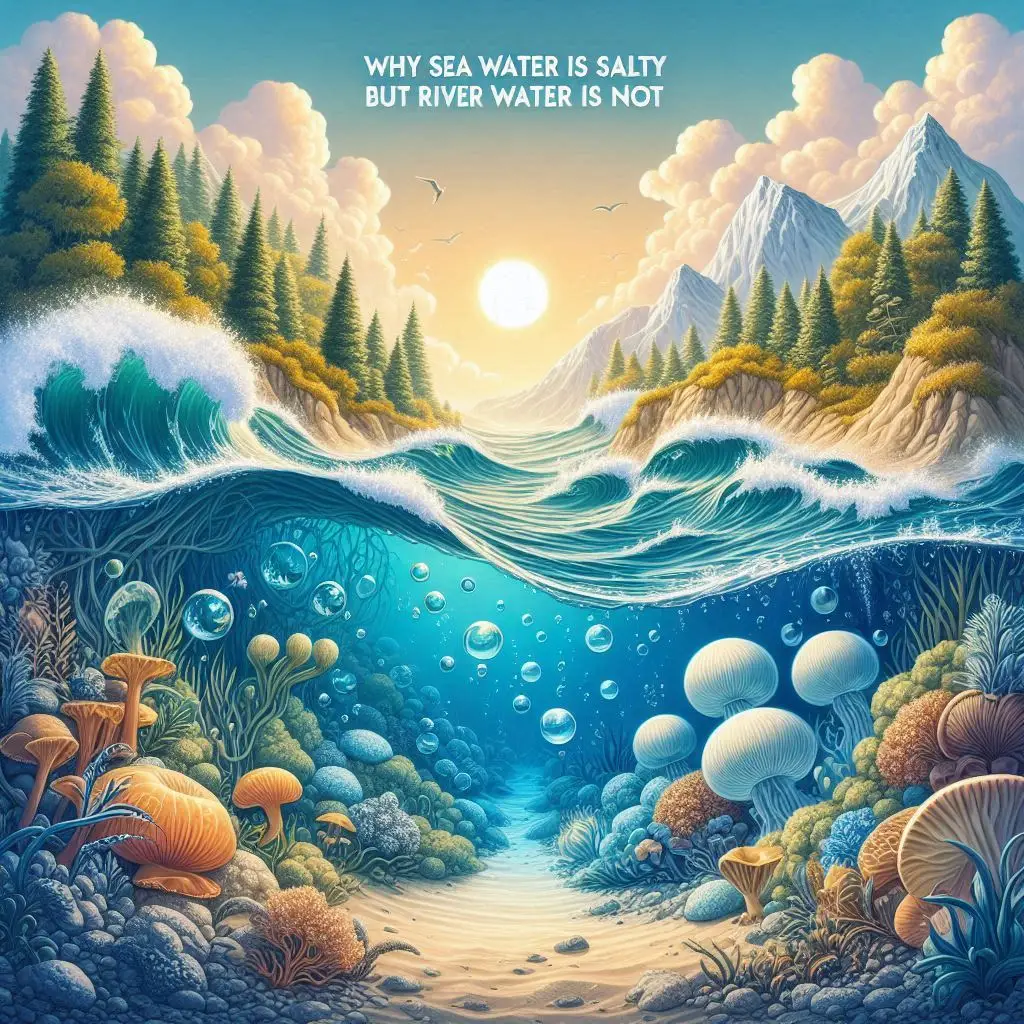
Why Sea Water Is Salty But River Water Is Not
Introduction
Understanding why sea water is salty but river water is not involves exploring the sources of salinity, the water cycle, and the geological and chemical processes that shape our planet's hydrosphere.
Water, in its various forms, is an essential component of life on Earth. It is found in rivers, lakes, seas, and oceans, each with distinct characteristics. One of the most noticeable differences between these bodies of water is their salinity. While sea water is famously salty, river water is generally fresh. This fundamental contrast raises intriguing questions about the nature of water and the processes that govern its composition.
The Origins of Salinity in Sea Water
The salinity of sea water primarily originates from the dissolved minerals and salts that are washed from the land into the oceans. Rainwater, slightly acidic due to dissolved carbon dioxide forming carbonic acid, weathers rocks and minerals as it flows over the land. This process breaks down rocks into their constituent minerals, many of which contain salts. Rivers and streams then transport these dissolved minerals and salts to the oceans.
One of the most common salts found in sea water is sodium chloride, which is abundant in many rock formations. When rainwater percolates through the soil and rock, it dissolves various salts, including sodium chloride, which are then carried to the sea by rivers. Over millions of years, the continuous addition of these salts has resulted in the high salinity of ocean water.
The Water Cycle and Salinity
The water cycle, or hydrological cycle, plays a crucial role in the distribution of salinity. The constant flow of water across, above, and under the Earth's surface is described by this cycle. It include processes including runoff, infiltration, precipitation, condensation, and evaporation.
When water evaporates from the surface of the oceans, it leaves behind the salts, as only the water molecules become vapor. This pure water vapor forms clouds and eventually precipitates as rain or snow, which is fresh because the salts do not evaporate with the water. This fresh precipitation replenishes rivers and lakes, keeping their salinity levels low.
Rivers, as part of this cycle, collect water from precipitation and runoff, carrying it back to the oceans. During this journey, rivers can dissolve additional minerals and salts from the rocks and soil they flow over, but the concentration remains low because the volume of water in rivers is constantly renewed by fresh precipitation. This constant renewal dilutes any dissolved salts, maintaining the freshwater characteristic of rivers.
Geological and Chemical Processes
Several geological and chemical processes contribute to the differing salinity levels in sea and river water. As rivers flow toward the sea, they pass through various landscapes, dissolving minerals from rocks. However, these dissolved minerals are generally present in low concentrations because the water volume in rivers is relatively small compared to the oceans.
In contrast, the oceans act as a final reservoir for these dissolved minerals and salts. The salts accumulate in the oceans over long periods because there is no significant outflow that removes them. Evaporation removes only the water, not the salts, leading to their concentration in the remaining water. Additionally, oceanic processes such as the formation of salt deposits and the cycling of water through hydrothermal vents also contribute to the overall salinity of sea water.
Biological Contributions to Salinity
Biological processes also play a role in the salinity of sea water. Marine organisms, such as algae and plankton, contribute to the cycling of elements like calcium, magnesium, and potassium. When these organisms die, their remains settle on the ocean floor, where they can release these elements back into the water as they decompose.
Moreover, some marine organisms secrete shells and skeletons made of calcium carbonate, which can later dissolve, releasing calcium and carbonate ions into the water. These biological contributions add to the overall mineral content of sea water, maintaining its salinity.
Human Impact on Salinity
Human activities have also impacted the salinity of both sea and river water. Industrial discharge, agricultural runoff, and wastewater can introduce various chemicals and salts into rivers, altering their natural salinity levels. However, these changes are often localized and do not significantly affect the overall salinity of major river systems.
In contrast, human activities such as desalination, mining, and the extraction of sea salts can impact the salinity of sea water. Desalination processes, which remove salts from seawater to produce fresh water, result in highly concentrated brine that is often returned to the ocean, affecting local salinity levels.
The Balance of Salt in Nature
Despite the continuous addition of salts to the oceans, the salinity of sea water has remained relatively stable over geological timescales. This stability is achieved through various natural processes that remove salts from the ocean. For example, the formation of evaporite deposits, where seawater evaporates in shallow basins leaving behind salt crystals, removes salts from the ocean water. Additionally, subduction processes, where oceanic plates are pushed beneath continental plates, can carry sediments and salts into the Earth's mantle.
Rivers, on the other hand, are part of a more dynamic and fast-moving system. The continuous flow of fresh water from precipitation ensures that the salts dissolved in rivers are regularly flushed out to the sea, preventing the buildup of salinity.
Conclusion
The difference in salinity between sea water and river water is a result of complex interactions between geological, chemical, biological, and hydrological processes. While sea water accumulates salts over long periods due to the continuous input from rivers and the lack of significant outflow, river water remains fresh due to the constant replenishment by precipitation and the dilution of dissolved minerals. Understanding these processes highlights the intricate balance of natural systems and the ongoing impact of human activities on water composition. The salinity of sea water and the freshness of river water are testaments to the dynamic and interconnected nature of Earth's water cycle.

